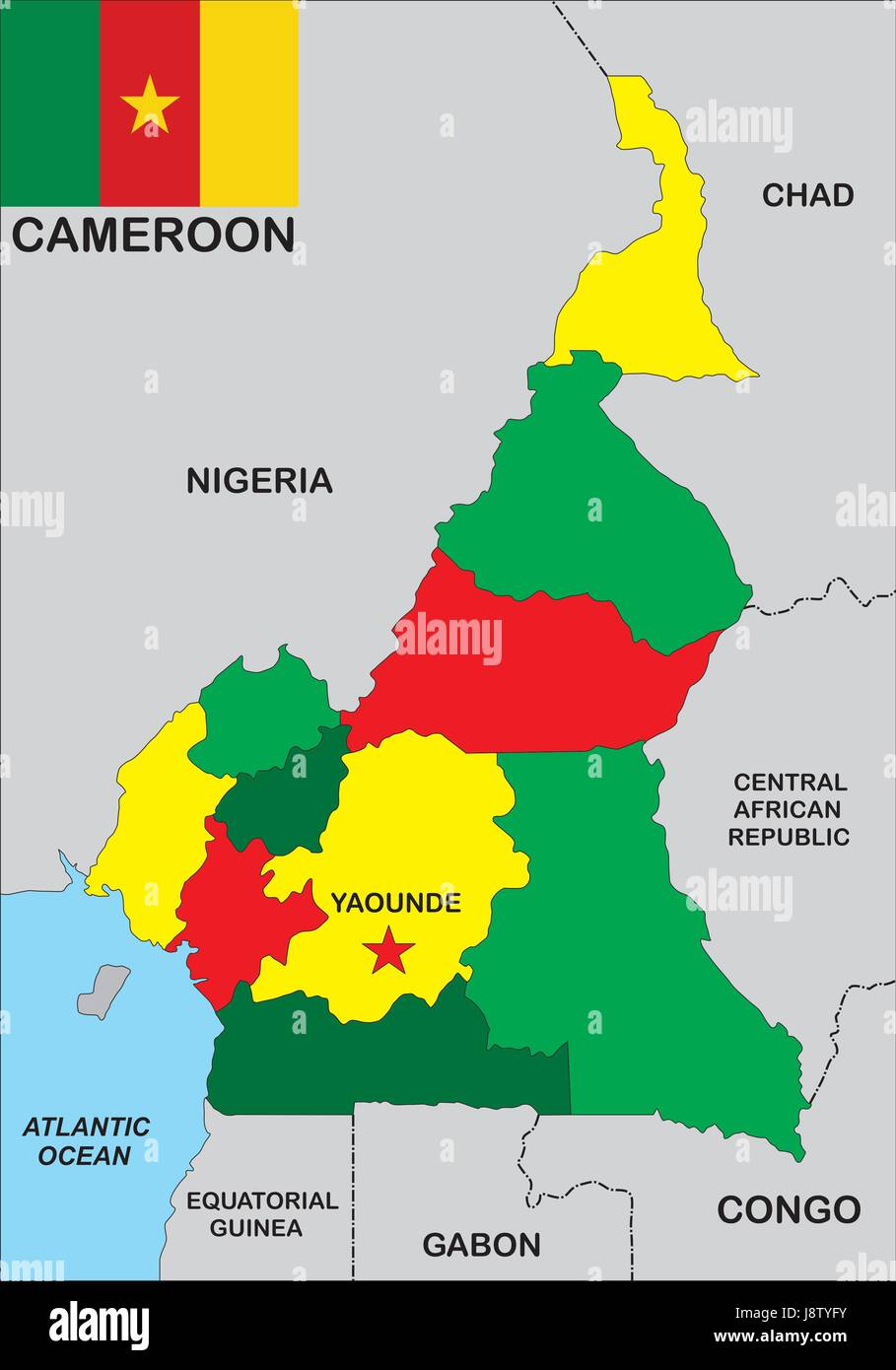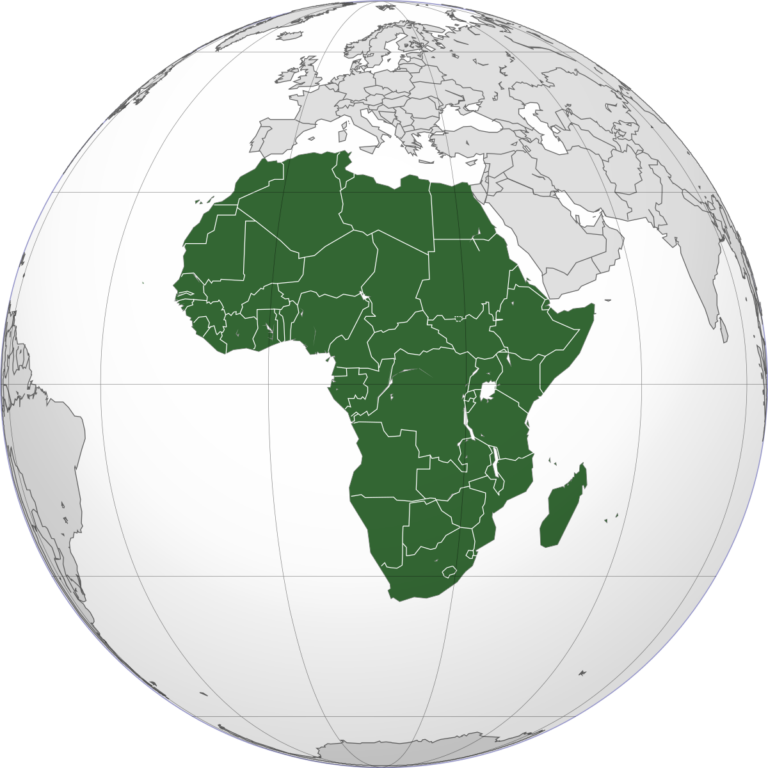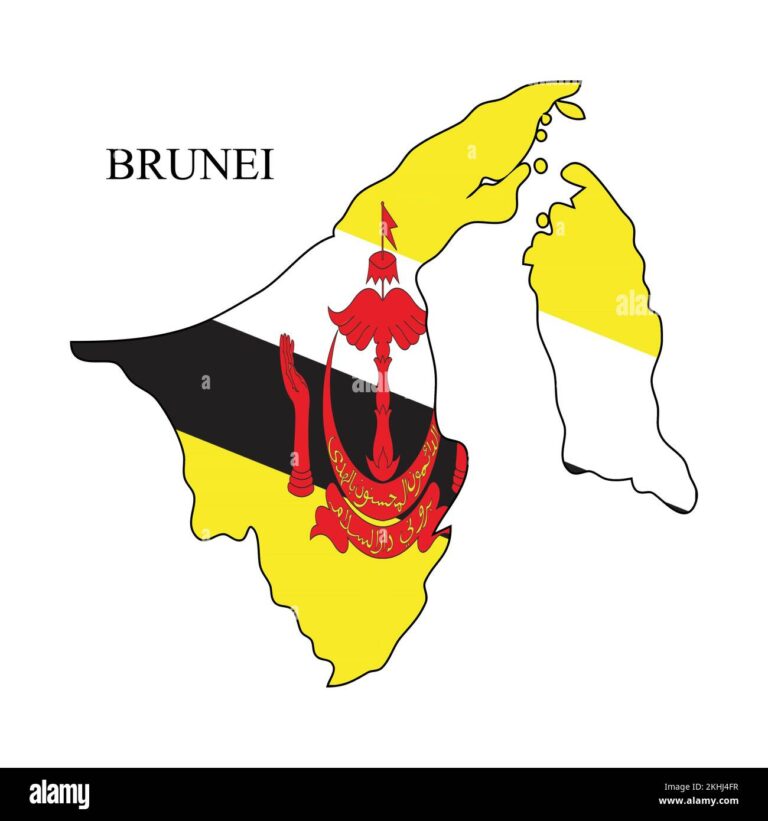Cameroon Neighbouring Countries on the Map

Cameroon’s Neighboring Borders
Cameroon sits snugly in Central Africa, keeping company with six neighbors, each offering a splash of diversity and exchanges. Let’s get into the nitty-gritty of the nations that share a fence with Cameroon: Nigeria, Chad, and the Central African Republic.
Nigeria: West and North
Hanging out on Cameroon’s west and north side, Nigeria cozies up with a whopping 1,227-mile boundary according to the World Atlas. It’s like the longest neighborly handshake ever! This border has a storied past, with a fair share of squabbles, especially over the Bakassi Peninsula. In 2002, the International Court of Justice played peacemaker, handing that piece of turf over to Cameroon (CIA World Factbook).
| Border Length | Noteworthy Historical Quarrels |
|---|---|
| 1,227 miles | Bakassi Peninsula tiff |
Chad: Northeast
Up in the northeast, Cameroon shakes hands with Chad. Though this line is less dramatic compared to others, it’s crucial for keeping the neighborhood peaceful and secure. Cameroon and Chad are like those neighbors who look out for each other’s homes—teamwork is key for tackling anything from sneaky threats to making bank together. You know, the kind of pals who plan the block party and handle issues like refugee movement and safety policies with smarts.
Central African Republic: East
Over to the east, Cameroon borders the Central African Republic. This line is vital for a bunch of reasons, mostly tied to security and helping folks in need. The ongoing chaos within the Central African Republic has sent waves of people into Cameroon, turning humanitarian issues into a big-ticket item on their friendship list.
Getting a grip on these borders gives a peek into Cameroon’s role in local and regional matters. For a deeper dive on African geography, check out who’s next door to countries like Chad and the Central African Republic.
More Neighboring Countries
Republic of the Congo: Southeast
Cameroon cozies up to the Republic of the Congo along its southeastern edge, creating a conduit that melds their cultures and economies. This border buzzes with trade and migration activities, as these two share resources and roll up their sleeves to tackle projects together. For a road trip through their shared past, check out the border history section.
| Country | Border Length (miles) | Key Points |
|---|---|---|
| Republic of the Congo | 389 | Major trade routes, cultural exchange |
Sources: CIA World Factbook
Equatorial Guinea: South
Snuggled for a lean 114 miles, the Cameroon and Equatorial Guinea border holds the title for Cameroon’s shortest land stretch (World Atlas). Despite its size, this boundary packs a punch economically and culturally. Back in 2017, Equatorial Guinea’s political shake-up temporarily slammed the border shut, pulling the brakes on businesses that cross over daily.
| Country | Border Length (miles) | Key Points |
|---|---|---|
| Equatorial Guinea | 114 | Economic impact during border closures |
Sources: World Atlas
Gabon: South
Travel south from Cameroon, and you’ll hit Gabon head-on after 217 miles of border (World Atlas). These neighbors aren’t just nodding from across a fence. With embassies dotting each capital, they get down to business with security and diplomatic partnerships (National Geographic Kids).
| Country | Border Length (miles) | Key Points |
|---|---|---|
| Gabon | 217 | Security cooperation and diplomatic presence |
Sources: World Atlas
Curious about historical sagas and boundary rumbles? Drop by our detailed border information for a deeper dig. For more on economic linkages and global politicking, swing by the socio-political impact corner.
Get the lowdown on more border stories like Afghanistan’s neighboring and Algeria live-wire locales in our extensive guide.
Detailed Border Information
Cameroon rubs shoulders with a handful of countries, each leaving its mark on history and politics. Let’s break down how history, boundary squabbles, and refugee numbers play into Cameroon’s interactions with its neighbors.
Historical Significance
Cameroon’s borders look the way they do thanks to a mix of colonial antics and international chit-chat.
-
Nigeria: This border, stretching over 1,200 miles, is dripping with history. Picture this: Cameroon used to be carved up between the British and French. Fast forward to 1961, a quick vote had parts opting to join Nigeria, and others making a home in Cameroon. The Bakassi Peninsula was a hot topic, sparking debates all the way to a 2002 ruling that kept the lawyers busy for years.
-
Chad: Northeast, we meet Chad. Their border story is calmer post-independence, with both countries focusing on playing nice, especially regarding security.
-
Central African Republic: To the east, they’ve pretty much stuck to the lines drawn in colonial days, though things do get a bit dicey with regional tiffs and waves of people moving across.
Boundary Disputes
Most of Cameroon’s border scuffles are with, you guessed it, Nigeria.
-
Bakassi Peninsula: This area saw tensions flaring in the ’80s and ’90s. It took a decision by the International Court of Justice in 2002 declaring Bakassi part of Cameroon to ease the situation, with Nigeria moving out by 2006.
-
Lake Chad Region: Both nations have played tug-of-war over territory and resources here, especially tricky with Boko Haram causing a ruckus. It forced them into a reluctant partnership to keep things under wraps and people safe.
Though these disputes are supposedly behind us, they still echo in how Cameroon and Nigeria get along these days.
Refugee Statistics
Troubled neighbors mean Cameroon’s been a beacon for those fleeing hardships and chaos.
| Country of Origin | Refugees in Cameroon (2022) |
|---|---|
| Nigeria | 116,000 |
| Central African Republic | 317,000 |
| Chad | 11,000 |
Data from the UN Refugee Agency shows these figures paint a picture of Cameroon juggling resources and humanitarian needs, while also leaning on international help to handle the influx.
Twisting and turning through history, border rows, and refugee waves, gives a peek into just why Cameroon’s geography shapes its political dance with neighbors. Want to unravel more about these geopolitical plots? Check out our takes on refugee numbers and the pursuit of justice at the International Court.
Dive into stories on nearby stop-bys like Chad and Nigeria through our nifty other writeups.
Socio-Political Impact
Cameroon and its neighbors have a mix of social, political, and economic relationships that are tight as a drum. To really get the full picture, you’ve got to peek behind the curtain at what’s happening and why it matters.
International Relations
Cameroon’s global relations with nearby countries are a big ol’ jumble of history and diplomacy. Take Cameroon and Nigeria – they’ve got a long stretch of land between them and have seen their fair share of squabbles and handshakes. Remember back in 2006 when Nigeria bowed out of the Bakassi Peninsula after a big court decision? Not only did it clear up some border beef, but it showed that sometimes a judge’s gavel can do more than just make noise.
Economic Ties
When it comes to bucks and business, Cameroon and its neighbors are in each other’s pockets, swapping goods and keeping the cash registers ringing. Nigeria, Chad, and the Central African Republic often top the list as key trading pals. They’re not just passing notes in class – they’re moving machinery, food, and oil around, making sure everyone gets a slice of the pie and things don’t crumble.
| Neighboring Country | Key Imports | Key Exports |
|---|---|---|
| Nigeria | Machinery, Chemicals | Petroleum, Agricultural Products |
| Chad | Textiles, Machinery | Livestock, Cotton |
| Central African Republic | Foodstuffs, Consumer Goods | Timber, Minerals |
The way their economies lean on each other shows how important it is to keep the wheels of trade spinning. Whether it’s cash crops or the latest tech, the dance of imports and exports keeps the lights on all around. For a deep dive into who’s sending what to whom, check out our big trade article.
Security Collaborations
When it comes to keeping safe, Cameroon and its neighbors have got to be thick as thieves. With threats like terrorism knocking on the door, teamwork is the name of the game. They’re all in on tackling bad eggs like Boko Haram. Cameroon’s been teaming up with Nigeria and Chad, swapping intel and soldiers to try and keep the peace. Chad even brought some troops over to pitch in (BBC).
| Neighboring Country | Security Collaboration Details |
|---|---|
| Nigeria | Joint military gigs, intel swaps on Boko Haram |
| Chad | Military backing against Boko Haram, security plans on the neighbor’s outlook |
| Central African Republic | Border hopping patrols, security drills together |
These team efforts really help stop the baddies from doing their worst. To get the skinny on how they’re working security magic, head on over to our section on security teamwork.
Looking at how these countries come together paints a picture of how their relationships mix and match across borders. For more nuggets on how all this plays out in other spots, have a gander at our pieces on Nigerian ties and Chadian connections.
Economic Overview
Cameroon’s economy blends trade partners, back-and-forth export-import numbers, and a line-up of big-name buyers. This throws some light on how Cameroon rubs shoulders with nearby countries and plays its part in the worldwide marketplace.
Trade Relationships
Cameroon’s trade ties are as strong as an elephant’s memory, thanks to its versatile exports. Back in 2021, Cameroon shipped out $5.9 billion in goods and services. The big players in their export game were crude oil, gas, chocolate’s dearest friend — cocoa beans, and sawn wood.
Most of Cameroon’s goodies made their way to:
- China
- The land of tulips and windmills, Netherlands
- The spicy streets of India
These connections are gold for keeping Cameroon rolling in prosperity.
Export-Import Balance
The export-import dance shows a country’s trade swag. In 2021, Cameroon welcomed $7.8 billion worth of stuff into the country, ending with a trade bruise of $1.9 billion in red ink. The table below breaks it down:
| Year | Exports ($ Billion) | Imports ($ Billion) | Trade Balance ($ Billion) |
|---|---|---|---|
| 2021 | 5.9 | 7.8 | -1.9 |
In 2022, Cameroon had to dig a bit deeper into their wallet, importing $7.96 billion in goodies. Items topping the list were Special Purpose Ships, the always needed Refined Petroleum, furniture that tells stories, rice to bust hunger, and wheat.
Major Trading Partners
The mighty ones Cameroon’s exchanging goods with give its economy the needed boost. In 2021, the shipping route led exports mostly to China, the Netherlands, and India. When it came to filling up ports, imports hailed from China, France, Nigeria, India, and Russia. Meanwhile over in the U.S., folks sent $103.1 million worth of exports to Cameroon in 2022.
This cheat sheet sums up Cameroon’s best trade buddies:
| Trade Partner | Exported to Cameroon | Imported from Cameroon |
|---|---|---|
| China | Yes | Yes |
| Netherlands | No | Yes |
| India | Yes | Yes |
| France | Yes | No |
| Nigeria | Yes | No |
| Russia | Yes | No |
| United States | Yes (2022: $103.1M) | No |
Grasping Cameroon’s trade antics is like holding a key to deciphering its play in both the local and big leagues of economics. For those of you curious about trade peaks and neighboring presses, take a stroll through our picks on Afghanistan’s neighbors, Algeria’s next-door nations, and Angola’s nearby folks.
Resolving Border Disputes
Border disputes are like stubborn thorns in the side of neighboring countries—they can cause a whole lot of trouble. Just take Cameroon, which has had its fair share of these feuds, especially with Nigeria. Thankfully, they’ve managed to sort things out with the help of legal bodies like the International Court of Justice (ICJ), smart diplomatic moves, and specific deals such as the Greentree Agreement.
International Court of Justice
The International Court of Justice (ICJ) stepped in as the peacekeeper for Cameroon and Nigeria, especially in sorting out their tiff over the Bakassi Peninsula. This place isn’t just a dot on the map—it’s loaded with oil, making it a hot commodity right next to the bustling port of Calabar. On October 10, 2002, the ICJ made a big decision, handing the rights to Cameroon. Axes were no longer being sharpened, since by 2006, Nigeria pulled back its troops, letting the matter rest for good. If you need a good nighttime read, check out the full story over at the BBC.
Diplomatic Relations
Now, here’s where things get interesting. Cameroon and Nigeria have played the diplomatic tango since they both waved goodbye to their colonial bosses in 1960. True, things got tense in the ’90s over the Bakassi Peninsula—it was almost time to queue the war drums. But cooler heads prevailed, and ever since, both countries have been chummy, especially about sorting out security in their neck of the woods.
Fast forward to 2012, these two nations inked a pact for the Cameroon–Nigeria Trans-Border Security Committee. It’s as fancy as it sounds—diplomats shaking hands over plans to keep an eye on border security, keep tabs on terrorists, and stop illegal doings like weapons smuggling (Wikipedia). Dive into the political waters a little deeper with our piece on international relations.
| Year | Diplomatic Event | Outcome |
|---|---|---|
| 1960 | Diplomatic Beginnings | Cooperation on the Up |
| 2006 | Nigerian Troop Exit | Bakassi Calm Achieved |
| 2012 | Security Pact Signed | High-Five for Security |
Greentree Agreement
Enter the Greentree Agreement, a real friendship bracelet of diplomacy, signed on June 12, 2006, on Long Island, New York. It paved the way for Nigeria to hand the Bakassi Peninsula over to Cameroon without a fuss. By August 2008, the transition was complete, drawing a thick line under the quarrel.
The success of the Greentree Agreement taught countries a thing or two about kissing and making up with international help. Feeling curious? Have a look at how other neighbors have sorted similar scraps with benin neighbouring countries and ghana neighbouring countries.
Through teamwork with the ICJ, savvy diplomatic engagements, and sticking to deals like the Greentree Agreement, Cameroon has swept away major territorial issues. This all goes a long way in keeping things friendly and stable around these parts.


